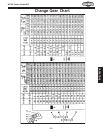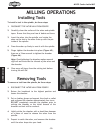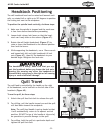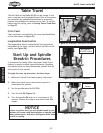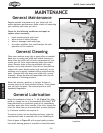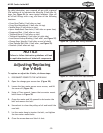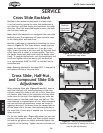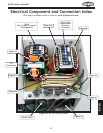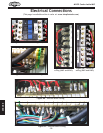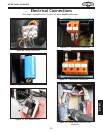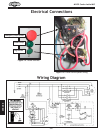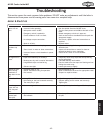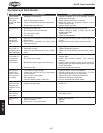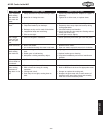
-36-
M1109 Combo Lathe/Mill
SERVICE
SERVICE
Figure 59. Cross slide backlash
adjustment cap screw.
Figure 60. Gib adjustment points.
Cross Feed
Backlash
Adjustment
Cap Screw
Saddle Gib Adjustment Points
Cross Slide Gib Adjustment Point
Figure 61. Half-nut gib adjustment
location (thread dial is swung out of the
way for gib adjustment).
Cross Slide Backlash
Backlash is the amount of play found in a lead screw.
It can be found by turning the cross slide handwheel in
one direction, and then turning the handwheel the other
direction. When the cross slide begins to move, the back
-
lash has been taken up.
Note: Avoid the temptation to overtighten the cross slide
backlash screw. Overtightening will cause excessive wear
to the sliding block and lead screw.
Backlash is adjusted by tightening or loosening the screw
shown in
Figure 59. This screw draws a wedge-type nut
against the lead screw and main nut. If you get it too
tight, loosen the screw a few turns and tap the cross feed
a few times with a rubber or wooden mallet. Then turn
the handle slowly back and fourth until the handle turns
freely. To readjust the backlash, rock the handle back and
fourth and tighten the screw slowly until the backlash
is at approximately 0.001" to 0.002" as indicated on the
handwheel dial.
Note: Reducing backlash to less than 0.001" is impractical
and reduces the life of the cross slide.
Cross Slide, Half-Nut,
and Compound Slide Gib
Adjustments
When adjusting these gibs (Figures 60 and 61), keep in
mind that the goal is to remove sloppiness in the ways
without causing the slides or half nut to bind. Loose gibs
will cause a poor finish on the workpiece and may cause
undue wear on the slide. Over-tightening may cause pre
-
mature wear on the slide, lead screw, and half-nut. The
cross slide gib is a tapered piece of iron. When the oppos
-
ing front and rear gib adjustment screws are turned in
opposing directions, the screws force the tapered gibs to
fill the loose void in the way, thus tightening the play in
the cross slide. If more play is needed turn the screws the
other direction.
For the four saddle gibs,
(Figure 60) loosen the jam nuts
and turn the three set screws until there is slight tension
felt and the gib plates are slightly preloaded against the
underside of the flat-way. Tighten the jam nuts when fin
-
ished.




